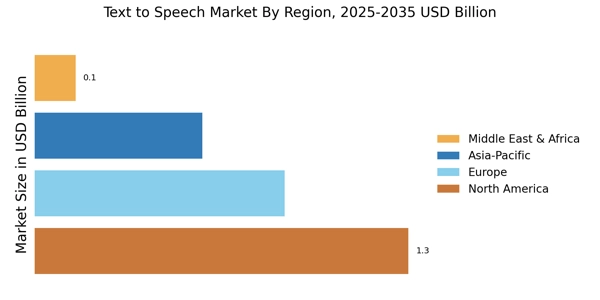Text to speech Market Summary
As per MRFR analysis, the Text to Speech Market Size was estimated at 2.83 USD Billion in 2024. The Text to Speech industry is projected to grow from 3.204 USD Billion in 2025 to 11.07 USD Billion by 2035, exhibiting a compound annual growth rate (CAGR) of 13.2 during the forecast period 2025 - 2035.
Key Market Trends & Highlights
The Text to Speech Market is experiencing robust growth driven by technological advancements and increasing demand for personalized solutions.
- North America remains the largest market for Text to Speech solutions, driven by high adoption rates in various sectors.
- The Asia-Pacific region is emerging as the fastest-growing market, fueled by rapid technological advancements and increasing digitalization.
- Neural Text to Speech technology dominates the market, while Non-Neural solutions are witnessing the fastest growth due to their cost-effectiveness.
- Key market drivers include the rising demand for accessibility solutions and the integration of Text to Speech with smart devices and IoT.
Market Size & Forecast
| 2024 Market Size | 2.83 (USD Billion) |
| 2035 Market Size | 11.07 (USD Billion) |
| CAGR (2025 - 2035) | 13.2% |
Major Players
Google (US), Amazon (US), Microsoft (US), IBM (US), Nuance Communications (US), iSpeech (US), Acapela Group (BE), Cepstral (US), ReadSpeaker (NL), Voxygen (FR)


















Leave a Comment